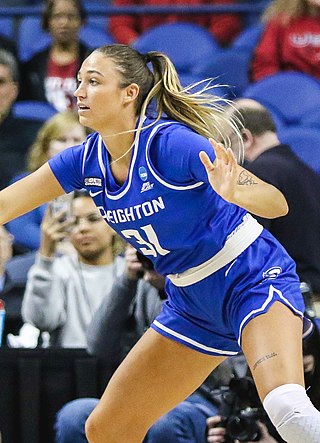Related Research Articles

South Dakota is a landlocked state in the North Central region of the United States. It is also part of the Great Plains. South Dakota is named after the Dakota Sioux tribe, which comprises a large portion of the population with nine reservations currently in the state and has historically dominated the territory. South Dakota is the 17th largest by area, but the 5th least populous, and the 5th least densely populated of the 50 United States. Pierre is the state capital, and Sioux Falls, with a population of about 213,900, is South Dakota's most populous city. The state is bisected by the Missouri River, dividing South Dakota into two geographically and socially distinct halves, known to residents as "East River" and "West River". South Dakota is bordered by North Dakota to the north, Minnesota to the east, Iowa to the southeast, Nebraska to the south, Wyoming to the west, and Montana to the northwest.

Harrisburg is a city in Lincoln County, South Dakota, United States and is a suburb of Sioux Falls. The population was 6,732 at the 2020 census.

Sioux Falls is the most populous city in the U.S. state of South Dakota and the 121st-most populous city in the United States. It is the county seat of Minnehaha County and also extends into northern Lincoln County to the south, which continues up to the Iowa state line. The population was 192,517 at the 2020 census, and in 2022, its estimated population was 202,078. According to city officials, the estimated population had grown to 213,891 as of early 2024. The Sioux Falls metro area accounts for more than 30% of the state's population. Chartered in 1856 on the banks of the Big Sioux River, the city is situated in the rolling hills at the junction of interstates 29 and 90.
The United States state of South Dakota has an official state song, "Hail, South Dakota!", written by DeeCort Hammitt. The state's largest city, Sioux Falls, is home to the South Dakota Symphony Orchestra. The town of Vermillion hosts the National Music Museum.

The Diocese of Sioux Falls is a Latin Church diocese of the Catholic Church diocese in South Dakota in the United States. It is a suffragan see of the metropolitan Archdiocese of Saint Paul and Minneapolis.
The Miss South Dakota Teen USA competition is the pageant that selects the representative for the state of South Dakota in the Miss Teen USA pageant.

O'Gorman High School is a Catholic high school in Sioux Falls, South Dakota. The school was founded in 1961 and named after Thomas O'Gorman. O'Gorman is located in the Diocese of Sioux Falls.

Interstate 90 (I-90) in the US state of South Dakota traverses east–west through the southern half of the state.
Central High School is a high school in Rapid City, South Dakota. The principal is Mike Talley. The high school mascot is the Cobbler. The nickname was changed from "Tigers" to "Cobblers" to honor the South Dakota Hall of Fame Coach, Euclid N. "Euc" Cobb.
The culture of the U.S. state of South Dakota exhibits influences from many different sources. American Indians, the cultures of the American West and Midwest, and the customs and traditions of many of the state's various immigrant groups have all contributed to South Dakota art, music, and literature.
This article describes transportation in the U.S. state of South Dakota.
The Missouri River Activities Conference is a high school athletic and activities conference whose members are located in either the Sioux City Metropolitan Area or the Omaha-Council Bluffs Metropolitan Area, both located along the Missouri River on the border of western Iowa, United States.
The Basin League was an independent collegiate minor league, that operated from 1953 to 1973, featuring teams primarily from South Dakota and one from Nebraska. The league name reflected the number of teams situated along the Missouri River Basin. The league roster structure evolved from having some professional players to totally being amateur. The Basin League was a pioneer of what is known today as collegiate summer baseball.

Emma Ronsiek is an American college basketball player for the Creighton Bluejays of the Big East Conference.